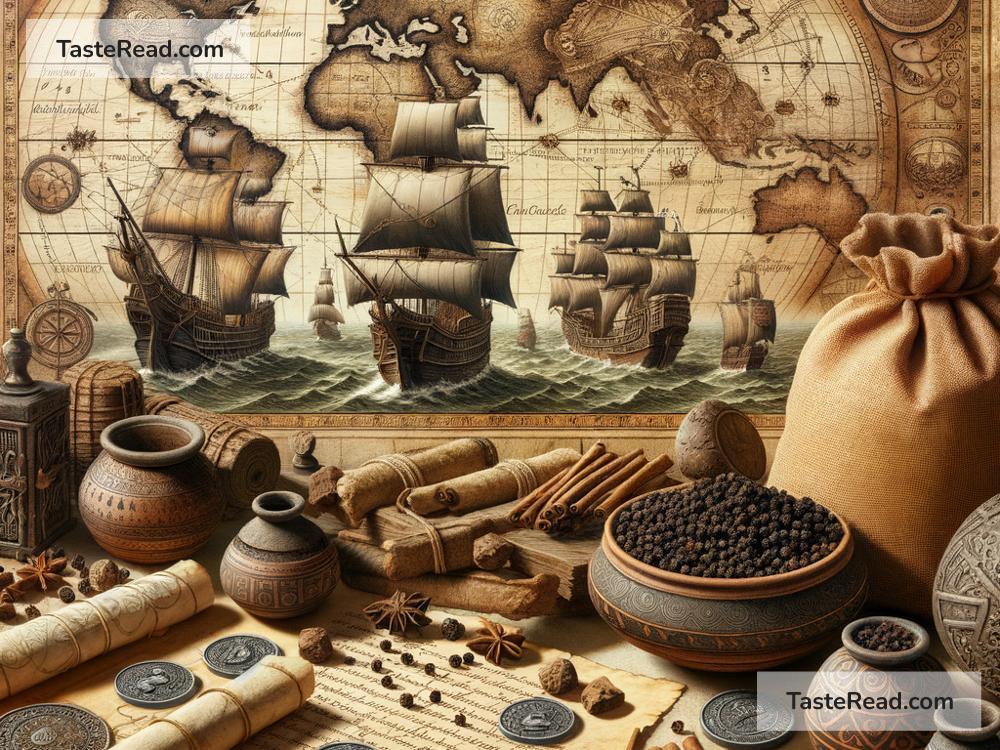The Fascinating History of Black Pepper in Ancient Trade
Imagine eating your favorite meal without that pinch of black pepper to bring out the flavor. Today, black pepper is such a common kitchen spice that many of us take it for granted. But did you know that black pepper once had a value so high that it was called “Black Gold”? Its history is deeply intertwined with ancient trade routes, exploration, and even the rise and fall of civilizations. Let’s dive into the fascinating story of black pepper and its journey from the forests of India to tables across the world.
Origins of Black Pepper
Black pepper, scientifically known as Piper nigrum, comes from the fruit of a flowering vine. This vine is native to the tropical regions of India, particularly in the Malabar Coast of Kerala. For thousands of years, locals harvested and dried the berries to make black peppercorns, which could be used as both a seasoning and a preservative to keep food fresh.
Ancient Indians already valued black pepper highly, not just for its culinary uses but also for its medicinal properties. Traditional Ayurvedic texts praise black pepper for curing indigestion, boosting metabolism, and even treating colds. But while black pepper held great importance within Indian culture, it eventually caught the attention of traders from faraway lands.
The Spice That Changed the World
Black pepper’s journey into global trade began thousands of years ago. In the ancient world, spices like pepper were rare and prized for their ability to enhance the flavor of otherwise bland diets. It was regarded as a luxury item and even seen as a mark of wealth and sophistication.
As early as 2000 BCE, black pepper was traded between India, Mesopotamia, and Egypt. Archeologists have found evidence of peppercorns in Egyptian tombs, suggesting that even pharaohs considered it a treasure worth being buried with. By 600 BCE, pepper began traveling to Greece and Rome via the Silk Road—a network of trade routes that connected Asia, the Middle East, and Europe.
The Romans were particularly obsessed with black pepper. During their empire’s height, Roman merchants imported tons of pepper every year. It was so valuable that Roman citizens would use it as a form of currency or as a payment for taxes. It was also highly coveted for medicine, and Roman doctors prescribed pepper for everything from sore throats to stomach aches. When the Visigoths sacked Rome in 410 CE, they demanded black pepper among their ransom, showing just how significant it was in Roman society.
The Role of Black Pepper in the Middle Ages
After the Roman Empire fell, black pepper’s popularity continued to grow throughout Europe. During the Middle Ages, pepper became essential to European diets. Food preservation techniques were limited during this time, so spices like pepper helped mask the taste of spoiled or bland food. Wealthy nobles used it as a culinary symbol of their status, while merchants viewed pepper as a lucrative business opportunity.
Pepper was so valuable that it played a central role in medieval trade routes, fueling the growth of cities like Venice and Genoa. These city-states became major trading hubs, connecting Europe to the East through sea trade. Merchants traveled to the Indian Ocean for spices, bringing them back to sell at enormous profits.
The spice trade was competitive, involving Arab, Persian, and Indian traders, each vying for control of this precious commodity. But one of the most influential groups in the trade was the Arab merchants. They acted as middlemen, carrying pepper from India to the ports of the Mediterranean and making sizable profits. For centuries, they controlled the pepper trade, maintaining its mystique by keeping the source of black pepper hidden from Europeans.
Pepper and the Age of Exploration
By the late 1400s, European explorers were determined to bypass the Arab monopoly on spice trade. The high cost of black pepper motivated explorers like Christopher Columbus and Vasco da Gama to seek direct sea routes to India. These explorers dreamed not just of finding gold and new territories but also of gaining access to the “spice islands” where valuable items, including black pepper, were grown.
In 1498, Vasco da Gama successfully reached the Malabar Coast of India. This marked the beginning of direct trade between Europe and India. Portugal soon established colonies in India to control the spice trade, followed by the Dutch and British, who desired their slice of the pepper pie. This competition eventually led to the colonization of many parts of India by European powers, forever altering the region’s history and economy.
Black Pepper Today
While black pepper no longer has the same value it once did, it remains one of the most widely used spices in the world. From humble home kitchens to gourmet restaurants, black pepper continues to enhance flavors and enrich dishes. What was once reserved for kings and emperors is now accessible to people from all walks of life.
The fascinating history of black pepper teaches us an important lesson about global connections. This tiny spice from India’s forests journeyed through ancient trade routes, inspired explorers, and played a role in shaping nations. So the next time you sprinkle some black pepper on your food, remember—you’re enjoying a taste of history that has traveled thousands of years to reach your plate!


